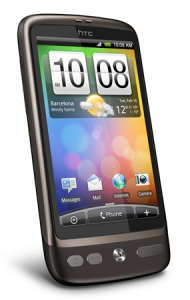I remember being at college and having to carry a plastic box full of 3.5″ floppy disks around with me. Every so often fluff from the deepest, darkest corners of the earth would infiltrate the shutter and… Abort, Retry, Fail? Shit, all my (hard) work consumed.
A few years pass and USB flash drives arrive on the scene, although they started out expensive, slow and lacking in any great capacity they we’re much more durable than floppy disks and as time went on physical size decreased, storage space and speed increased exponentially.
So for the last few years I’ve been carrying around a 16GB OCZ Rally2, it’s battered and I’ve lost the plastic cap that keeps the USB connector free from dust but it works and it’s quick. Then one day I was walking to work and I found a USB flash drive on the pavement, I picked it up and wondered if I could reunite it with its owner. Plugging it in to a virtual machine in a sandbox I tried to see if I could identify who it belonged to, it had a few Word documents on it but nothing that would help me identify the owner.
I started to think about all the personally identifiable information I had on my flash drive, my CV, letters to my bank, job applications, all things I wouldn’t really want people to read if for whatever reason I mislaid the drive. Looking around the Internet I decided upon the not so elegant solution of creating an encrypted partition on the drive using TrueCrypt, it did the job but I had to rely on being able to install TrueCrypt on any machine I needed to access the encrypted files from.
 Recently I stumbled upon Dropbox, a web based file hosting service. They offer a freemium service that gives 2GB of storage which can be increased by referring users to the site and they’ll double the referral bonus space for users registering with an academic email address (this also works for .ac.uk addresses).
Recently I stumbled upon Dropbox, a web based file hosting service. They offer a freemium service that gives 2GB of storage which can be increased by referring users to the site and they’ll double the referral bonus space for users registering with an academic email address (this also works for .ac.uk addresses).
Once registered you download the client app, install it and choose a place on your computer to display a shared folder, anything you drop into the folder is synchronised to Dropbox and it appears on any other machine or device you have the software installed on.
What I really like about the service is just how many Operating Systems and devices are supported, I can share files between my Mac, my Windows 7 PC which dual boots to Ubuntu and my Android smart phone. The connection is over SSL and all the files stored on Dropbox are encrypted.
A few years ago, this type of service just wouldn’t have been practical, we’ve got a 20Mbit Internet connection at home and I’m lucky enough to be connected to an academic network at 155Mbit at work so moving files about is virtually seamless. I carry my smart phone with me everywhere so I can grab files on the go plus Dropbox can be accessed through any web browser if you don’t have the rights to install the client.
I don’t have to worry about losing my flash drive, damaging the USB connector or just how long the flash memory chips inside it are going to last, everything is stored on Amazon’s Simple Storage Service (S3) and it just works!
Not only does Dropbox let me keep private files, I can share any of my files with other people, I can create a Public folder that anyone can have access to and I can even upload images to galleries and give people access without them having to have a Dropbox account.



